There Is No Evidence that These Devices Fulfill Their Promises

The Essential Info
Heat therapy devices work by the notion that spot treating an acne lesion with heat can kill bacteria within the lesion, helping reduce inflammation and helping the lesion heal faster.
If they worked, they would be a great tool, but we still do not have enough evidence to show whether they really do work.
Buyer Beware: These devices are money-makers for the companies that sell the devices and replacement “tips,” but they may not be worth the expense.

The Science
- Science Behind the All Heat-producing Acne Treatment Devices
- What about Devices at the Cosmetic Dermatologist’s Office?
- The Bottom Line
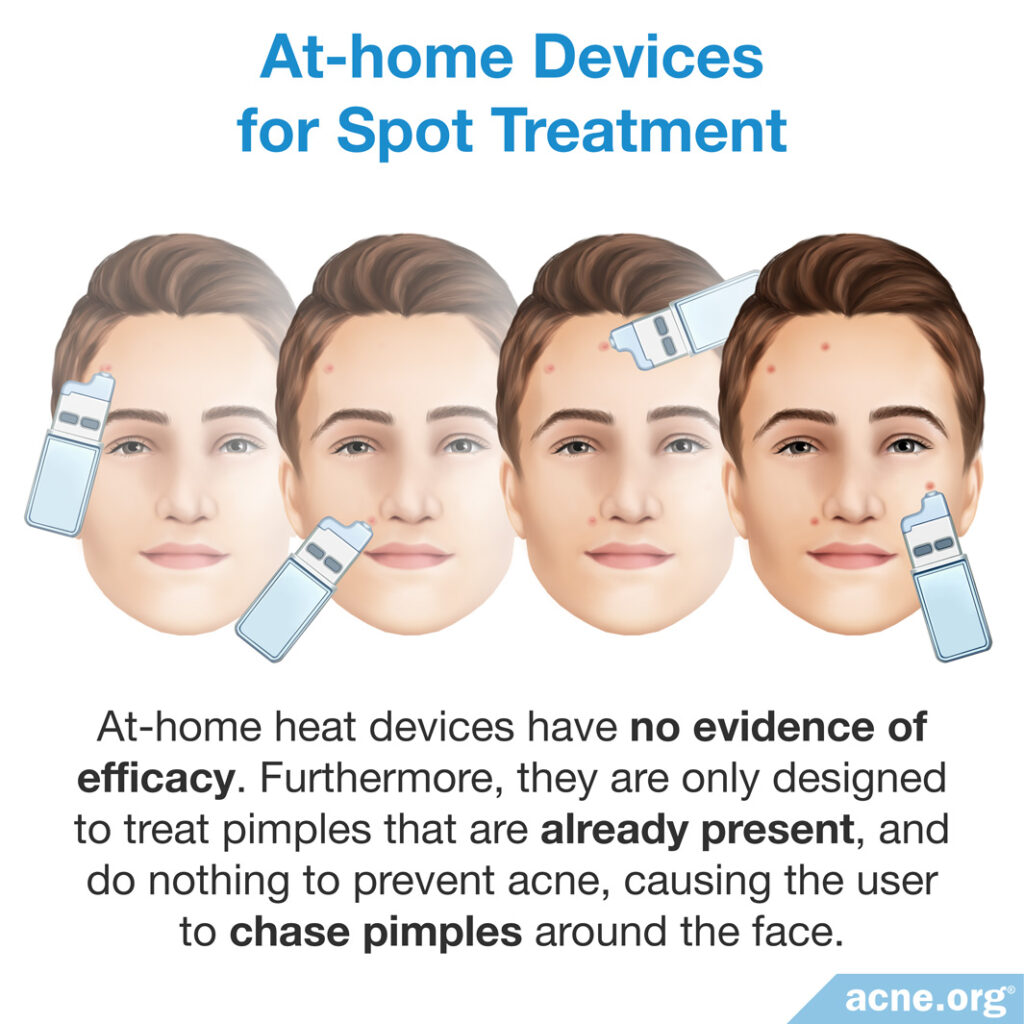
In recent years, heat therapy devices like Zeno , No! No! Skin
, No! No! Skin , and ThermaClear
, and ThermaClear have hit the market, claiming to help heal acne lesions quickly by killing acne bacteria.
have hit the market, claiming to help heal acne lesions quickly by killing acne bacteria.
The devices are marketed for mild, inflammatory acne (little red zits) only, and are designed to treat pimples that are already present. They do nothing for prevention, and tend to leave users chasing pimples around their face at up to 50 cents per “zap.”
Even so, if these devices worked, they would be great tools to have. Unfortunately, we’re looking at a big “IF.” Science on these devices is incomplete at best, and based on our own admittedly unscientific trial here at Acne.org (several of us tried them for a few weeks and noticed no results), they did not work.
The Science
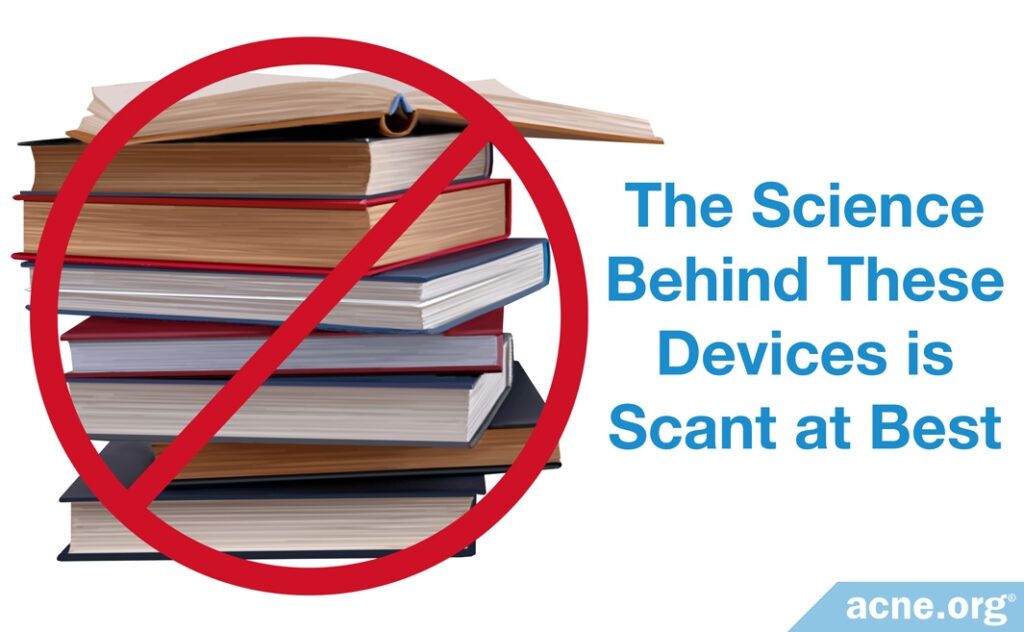
The medical concept behind all heat-producing acne treatment devices is that heat causes acne bacteria to activate heat-shock proteins, which then damages or kills some of the bacteria.
Researchers theorize that acne bacteria plays a role in the process by which a clogged pore becomes inflamed, so damaging or eliminating some bacteria could theoretically help prevent a clogged pore from becoming a full-blown pimple.
If this all sounds vague, that’s because it is. The science behind these devices is scant at best.
The science behind at-home devices comes from two small studies published in medical journals as well as one unpublished study.1-3 Although the results of these studies are somewhat encouraging, the structure of two of the studies is extremely weak. Therefore, it is far too early to draw any conclusions about how well at-home therapy works on acne. More independent research studies with a larger number of participants are needed before we can have any confidence that at-home heat therapy is worth your time and money.
Expand to read details of studies
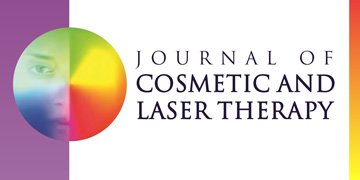
The strongest evidence we have for at-home heat therapy comes from a study published in the Journal of Cosmetic and Laser Therapy in 2010. This study tested a device called No! No! Skin on people with mild-to-moderate acne. The study included 63 participants, who were divided into 2 groups:
on people with mild-to-moderate acne. The study included 63 participants, who were divided into 2 groups:
- Group 1 used the No! No! Skin
 device.
device. - Group 2 used a placebo device that looked similar but did not produce heat.
Both groups used their devices twice a day for 4 days: once a day at home and once a day at the clinic in front of a doctor. After the treatment period, two researchers assessed the participants’ skin. These researchers were “blind,” meaning they did not know which participants had used the real device and which ones had used the placebo device. This makes the results more reliable because the researchers were unbiased.
The researchers found that the first 24 hours of using the at-home heat therapy device caused the most marked improvement in acne. After the first 24 hours, they reported a visual improvement of 77% in Group 1, which used the No! No! Skin device, compared to 16% in Group 2, which used the placebo device. After 4 days of treatment, people in Group 1 experienced clearing of 52% of their acne lesions, compared to 36% in Group 2.1
device, compared to 16% in Group 2, which used the placebo device. After 4 days of treatment, people in Group 1 experienced clearing of 52% of their acne lesions, compared to 36% in Group 2.1
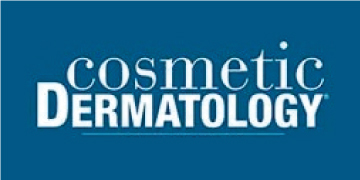
The second published study is much smaller and appeared in the journal Cosmetic Dermatology in 2007. This study looked at another at-home heat therapy device called Zeno . The study included 15 participants, each of whom had to have 2 similar-looking acne lesions on the face. The two lesions on each participant’s face were treated differently:
. The study included 15 participants, each of whom had to have 2 similar-looking acne lesions on the face. The two lesions on each participant’s face were treated differently:
- One lesion was treated with the Zeno
 heat therapy device.
heat therapy device. - The other lesion was treated with a placebo device that looked similar but did not produce heat.
All participants underwent this treatment twice on the first day and once on the following day. The researchers visually compared the two acne lesions in each participant on the first, second, and fifth day. They found that in about half of the participants, the Zeno device helped to clear mild-to-moderate acne lesions faster than the placebo device.2
device helped to clear mild-to-moderate acne lesions faster than the placebo device.2
We should note that this study had several weaknesses:
- It only included 15 participants.
- The investigators were not “blind:” they knew which lesions had received treatment with the heat therapy device and might have been expecting to see a particular result.
- The doctors performing the study were paid by the company that makes the Zeno
 device.
device.
Adding further questions to whether heat devices can do anything for acne, a more recent study showed that bacteria that were killed by heat were still able to produce an inflammatory response.4
What about Devices at the Cosmetic Dermatologist’s Office?
Radiofrequency devices: Cosmetic dermatologists sometimes offer radiofrequency treatments that use heat in an attempt to plump the skin and provide anti-aging benefits in their offices. There is one very small, flawed and incomplete study showing some promise of these devices in treating acne as well.5
Heat + light devices: In addition, two even smaller preliminary studies tested a novel acne treatment device that combines heat with light.6,7 While this device seems to show some promise for treating acne, it is impossible to determine whether the heat or the light is primarily responsible for the effect. Furthermore, the second of these two small studies had a very poor experimental design, making the results highly unreliable.
These treatments can be costly, and the jury is still out on whether they should be recommended.
Expand to read details of studies

One small study published in 2003 in Dermatologic Surgery investigated the effectiveness of the ThermaCool device in 22 patients. The device works by generating electromagnetic energy, which heats a small area of the skin, while simultaneously spraying a cooling substance on the skin that prevents the heat from damaging the skin. “An excellent response (75% or better diminution in active acne lesion counts) was seen in 92% of the patients, a modest response (25% to 50% better on active acne lesion counts) in 9%, and no response (less than 25% in acne lesion counts) in 9%. Student’s test showed a highly statistically significant difference in before versus after lesion counts. Acne was not made worse in any of these patients.”5 Although this study suggests that radiofrequency therapy may be effective as a treatment for acne, it should be kept in mind that this study included a very small number of people and was funded by Thermage, Inc., the company that makes the device. In addition, the authors of the study did not describe how the response rate was measured and whether the person assessing the acne counts was blinded to the treatment. We therefore cannot draw any conclusions from this study.
device in 22 patients. The device works by generating electromagnetic energy, which heats a small area of the skin, while simultaneously spraying a cooling substance on the skin that prevents the heat from damaging the skin. “An excellent response (75% or better diminution in active acne lesion counts) was seen in 92% of the patients, a modest response (25% to 50% better on active acne lesion counts) in 9%, and no response (less than 25% in acne lesion counts) in 9%. Student’s test showed a highly statistically significant difference in before versus after lesion counts. Acne was not made worse in any of these patients.”5 Although this study suggests that radiofrequency therapy may be effective as a treatment for acne, it should be kept in mind that this study included a very small number of people and was funded by Thermage, Inc., the company that makes the device. In addition, the authors of the study did not describe how the response rate was measured and whether the person assessing the acne counts was blinded to the treatment. We therefore cannot draw any conclusions from this study.
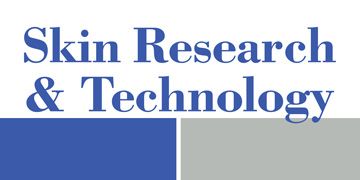
Another, even smaller study published in Skin Research and Technology in 2012 tested a novel acne treatment device that combines heat and light therapy. The researchers tested the device on 13 volunteers with facial acne. They reported that treatment with the heat and light device decreased redness and inflammation in acne lesions in 11 of the volunteers. However, two of the volunteers experienced exactly the opposite effect – in other words, their acne lesions became redder and more inflamed.6
Again, 13 volunteers is a very small number, so we cannot draw any firm conclusions from this study. It is also important to note that the researchers did not test heat and light separately. Therefore, we have no idea how much of the effect, if any, was due to heat itself.
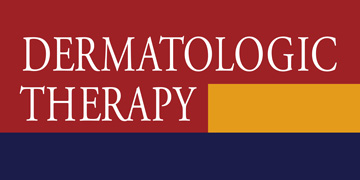
Similarly, another very small study published in the journal Dermatologic Therapy also tested a device that combines heat and light therapy on acne. Twelve Asian patients with acne who visited the doctor first applied gold nanoparticles to the skin and then received treatment with the heat and light therapy device. Each patient received 3 treatments at 1-to-2-week intervals. After this course of treatment, two dermatologists assessed the acne lesions and saw a significant improvement in inflammatory and non-inflammatory lesions in all patients.7
However, we should note that this study had several serious weaknesses:
- It only included 12 patients.
- There was no control group, meaning a group of patients who received no treatment for comparison.
- Since all the patients received the treatment, the researchers were expecting to see an improvement and may have been biased when looking at the results.
- The patients received treatment with gold nanoparticles before undergoing heat and light therapy, so we cannot be sure which of these treatments led to the acne improvement.
The Bottom Line
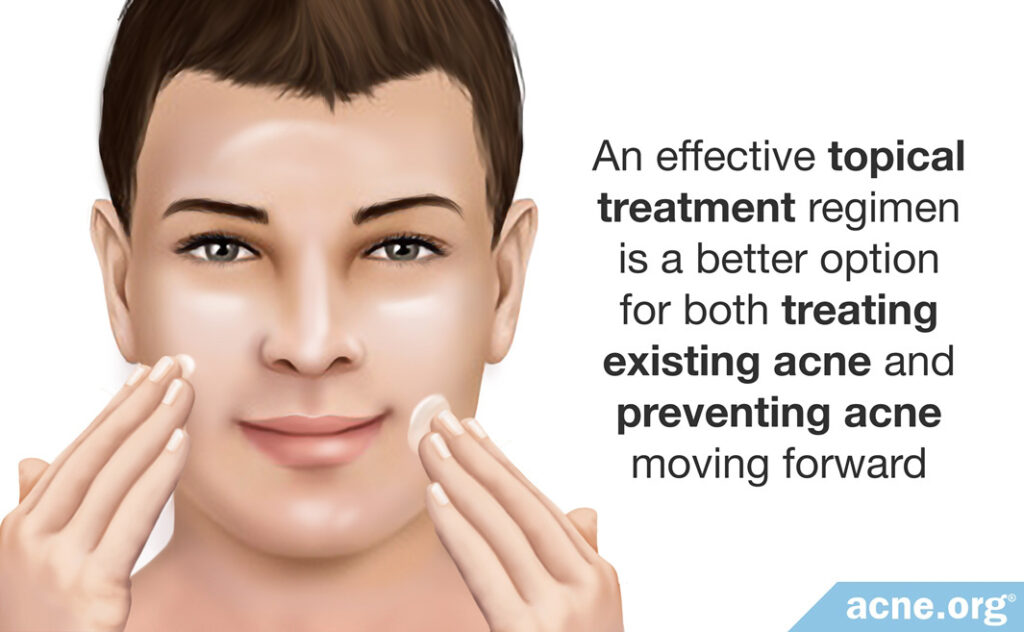
There is no science to support the use of at-home heat devices for treating acne. Since the beginning of civilization, salesmen have produced “miracle devices” which claim to heal just about every disease known to man. When something seems too good to be true, it usually is. When you consider the paucity of science behind these products, and also consider the cost of the devices combined with the cost of “replacement tips,” a healthy dose of skepticism is in order.
References
- Sadick, N. S. et al. Treatment of mild-to-moderate acne vulgaris using a combined light and heat energy device: home-use clinical study. Journal of Cosmetic and Laser Therapy 12, 276-83 (2010). https://pubmed.ncbi.nlm.nih.gov/21142737/
- Gold, M. H. et al. A randomized, controlled, double-blind study of localized low-heat treatment of acne lesions. Cosmetic Dermatology 20, 495-499 (2007). https://www.mdedge.com/dermatology/article/68910/acne/randomized-controlled-double-blind-study-localized-low-heat-treatment
- Bruce, S. et al. Significant efficacy and safety of low level intermittent heat in patients with mild to moderate acne. Suzanne Bruce and Associates, Tyrell Inc., Synergos Inc. http://citeseerx.ist.psu.edu/viewdoc/download?doi=10.1.1.587.9200&rep=rep1&type=pdf
- Lyte, P., Sur, R., Nigam, A. & Southall, M. D. Heat killed Propionibacterium acnes is capable of inducing inflammatory responses in skin. Exp. Dermatol. 18, 1070 – 1072 (2009). https://www.ncbi.nlm.nih.gov/pubmed/19624731
- Ruiz-Esparza, J. & Gomez, J. B. Nonablative radiofrequency for active acne vulgaris: the use of deep dermal heat in the treatment of moderate to severe active acne vulgaris (thermotherapy): a report of 22 patients. Dermatol. Surg. 29, 333 – 339; discussion 339 (2003). https://www.ncbi.nlm.nih.gov/pubmed/12656809
- Joo, Y., Kang, H., Choi, E. H., Nelson, J. S. & Jung, B. Characterization of a new acne vulgaris treatment device combining light and thermal treatment methods. Skin Res. Technol. 18, 15-21 (2012). https://www.ncbi.nlm.nih.gov/pubmed/21585558
- Suh, D. H. et al. Photothermal therapy using gold nanoparticles for acne in Asian patients: A preliminary study. Dermatologic Therapy 34, 1-4 (2021). https://pubmed.ncbi.nlm.nih.gov/33631028/
The post Heat Therapy for Acne appeared first on Acne.org.
